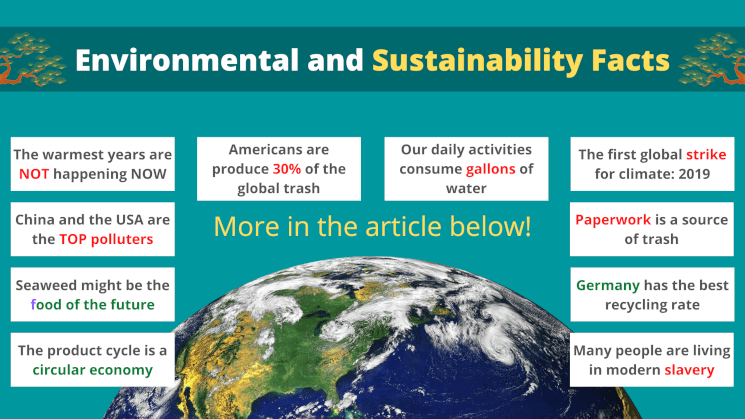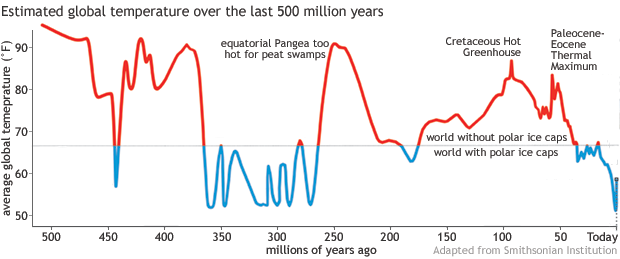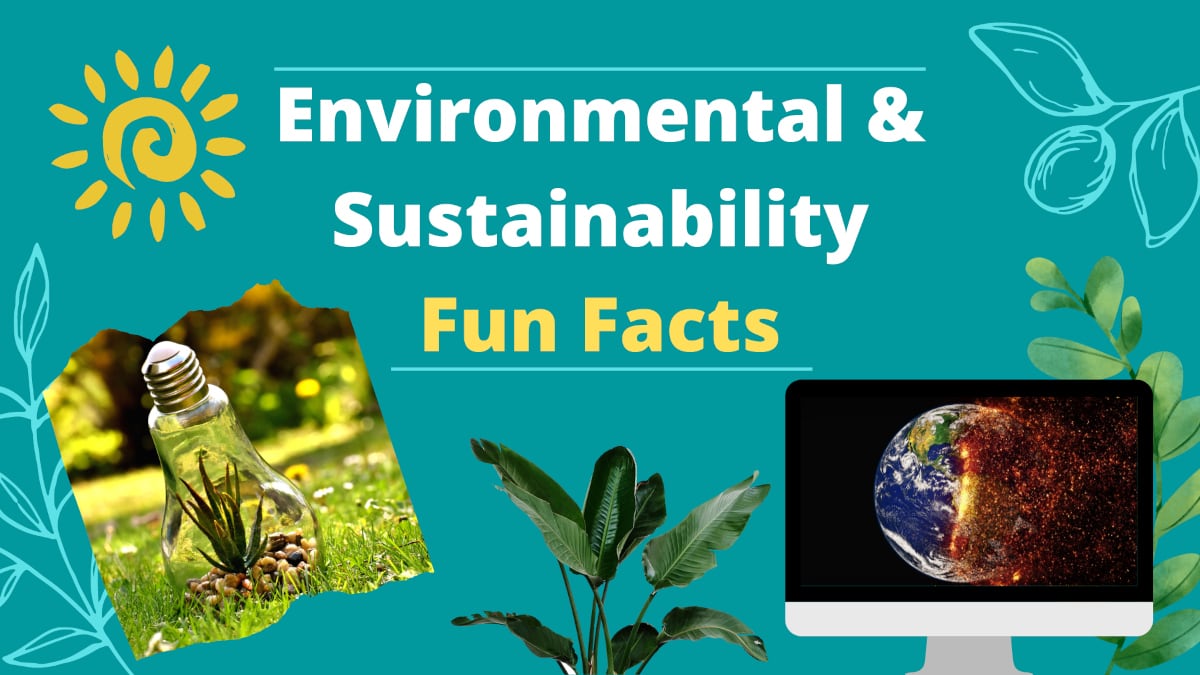Sustainability facts can be very useful to know, as well as very interesting. The next time you will find yourself in an argument about the environment, just show them some interesting environmental facts!
Because nothing can be more persuasive than irrefutable eco facts about sustainability and how human activities are affecting our planet.
Our lifestyles can put our planet at risk. If we are truly concerned about sustainability, we need to make more sustainable decisions by following the 6 Rs of sustainability for an eco-friendly lifestyle. And to achieve this, we need to first understand what sustainability entails.
What is sustainability?
Sustainability can be defined as the ability to meet our needs without compromising the ability of future generations to meet theirs. It can also be defined as utilizing the available physical, natural, and social resources while preserving the ecosystem.
Pillars of sustainability
The three pillars of sustainability or 3 Ps (Planet, People, Profit) are the pathways governments, corporations, and institutions follow to achieve sustainable development goals.
In other words, sustainability goals are achieved thanks to environmental responsibility and by fulfilling the three important pillars, including:
- Environmental sustainability – Nature and the environment are renewable sources of resources but need to be protected and utilized rationally. Various factors, including water conservation, renewable energy sources, sustainable fashion, innovative construction, and sustainable urban design, are all examples of environmental sustainability which help conserve the planet from different angles.
- Social sustainability – Encourages social development and cultural sustainability, while being after cohesion in various communities and cultures to achieve quality of life, healthcare, and education. Gender equality is another factor that determines social sustainability actions in the future.
- Economic sustainability – Sustainability needs economic growth. This generates equal wealth while protecting the environment. The economic sustainability pillar includes all activities, including agriculture, green tourism, industry, green IT, etc. Investment and equitability encourage the maximization of development under other sustainability pillars.
In some cases, this framework is slightly modified into the 4 pillars of sustainability by giving additional emphasis to the human aspects.
Now let’s look at some sustainable facts, or I could also say: “Sustainability did you know…” interesting facts about the environment.
Environmental and Sustainability fun facts

1. The warmest years are not happening now
The last decade recorded the five warmest years since recordings started. However, talking about sustainability, did you know that those recordings cover only a tiny fraction of the planet’s history?
The climate on our planet has always been evolving, going from much warmer periods compared to what we have now, up to much colder ones during the ice ages.
By the Earth’s climate “standards” we are actually living in a quite cool era. This graph from climate.gov shows the temperature of our planet during the past 500 million years. As you can see, despite the steep rise in the modern era, we are still well below average.

As you can see, for most of the last 500 million years our planet was without the polar ice caps! Life didn’t end because of that.
On the other hand, this should not be an excuse to not act in reducing human-caused emissions. Because recent years saw a steep rise in the temperature of our planet and a large percentage of those emissions are just caused by inefficiencies that can be avoided in our processes.
In addition, fossil fuels will not last forever, so it is wise for humanity to move away from them as soon as possible and use more sustainable energy sources.
2. Seaweed might be the food of the future
Seaweed farming is becoming more and more popular. It is a versatile and nutritious crop, and it grows quickly compared to land crops. Some types of seaweed can be harvested within six weeks. With the continuous rise in world population, seaweed coupled with other green tech, could be the perfect remedy for food shortages.
This is without a doubt one of the interesting facts about sustainability, however, I’m personally not a big supporter of seaweed being used as human food.
3. The product cycle is a circular economy – the perfect way to reuse products
The perfect way to reuse products and have a long product cycle is through a circular economy. Also, doing this allows you to save thousands on the annual budget for the average-size household.
4. Many global leaders embraced the united nation’s sustainable development goals
We often hear people arguing about global leaders not doing enough to conserve the planet. While this is true to some extent, in recent years many of them have actually been working on solutions for the environmental problems we all care so much about.
5. Climatic change definition
This weather condition was described as “a change of climate that is attributed directly or indirectly to human activity that alters the composition of the global atmosphere, and that is in addition to natural climate variability over a comparable period.”
6. China and the USA are the TOP polluters in the world
China emits 10,357 metric carbon dioxide tons, making it the world’s largest polluter. United States, India, Russia, and Japan respectively follow closely.
On the other hand, China is also the world’s largest manufacturer, producing goods for most of the world.
Moreover, China’s population counts over 1.4 billion people while the USA counts just over 300 million people. This means that the average American in the US pollutes the environment much more than the average Chinese.
This is despite the USA having outsourced most of its (polluting) manufacturing to China to then import back just the finished goods.
So one could argue that the US population is actually still the top polluter in the world!
7. Air pollution in Mpumalanga province
The South African province of Mpumalanga has large coal power plants, which is why it has the highest air pollution level in the world.
8. CO2 emissions need to drop by 45% by 2030, OR NOT?
The CO2 emissions by humans need to be reduced by 45% by 2030 to limit issues related to climate change. But are we sure about this?
While it is good practice to set ambitious targets, there is also another argument claiming that the 2030 deadline is not so strict.
This is due to the coming grand solar minimum that started in 2020 and will last until 2053. Due to this, we should experience a reduction in the activity of the Sun and, as a consequence, a reduction of the temperature on our planet by up to 1.0°C.
This reduction will effectively give us more time to reduce our emissions and avoid the more negative climate scenarios presented by some scientists.
9. Energy is the main factor leading to climate change
Energy accounts for at least 60% of the total emission of global greenhouse gases. This makes it the major human-caused climatic change contributor.
10. Energy consumption in lighting
Lighting uses about 15% of the world’s electricity use. Using LED can save up to 90% of this energy. In addition, LED lights are lasting much longer than traditional light bulbs.
11. Water and accessibility
70% of our planet is covered by water. However, out of 70 percent, only 2.5 percent is fresh and what is accessible for human use is 1%.
12. Solid waste produced by the average college student
Around 640 pounds of trash is produced by college students each year.
13. The amount of carbon dioxide (CO2) in the atmosphere
According to various reports, we’ve added nearly 2.4 trillion tons of CO2 into the atmosphere. Half of this huge amount was emitted in the last 35 to 50 years.
14. Housing and transportation are the major contributors to carbon dioxide
Nearly 60% of carbon dioxide is due to transportation and housing activities. Huge tons of fuel are used in heating and transportation.
This doesn’t come as a surprise when you consider that the energy efficiency of the otto cycle used by our petrol engines is only around 20%. Meaning that our cars are wasting about 80% of the energy contained in their fuel. A lot of those emissions could be avoided if we had better ways to use this energy.
If you can’t live without a private car, at least try to use it in a more efficient way. For example, use the cruise control to save gas and consider other economic incentives to further reduce fuel consumption while also getting car insurance discounts.
15. Greenhouse gas comes from many sources
Although greenhouse gas is caused by the excessive burning of fossil fuels, there are many other sources, including organic waste decomposition. Therefore, the first step towards reducing human impact is engaging all social sectors in more sustainable lifestyle practices.
16. A small number of countries are the major emitters
The USA, China, Canada, Russia, India, and Japan are the major emitters. These emitters accounted for over 70% of the energy-related carbon dioxide emission in 2004.
17. The discoveries during the international coastal clean-ups
Cigarette butts, plastic cans, bottles, food wrappers, plastic lids, straws, and stirrers are common discoveries during international coastal clean-ups.
That’s why is so important to use eco-friendly products even for simple things. For example, why don’t you get a zero-waste plastic-free shampoo and conditioner instead of the classic one?
18. Many people are living in modern slavery today
According to recent findings, around 36 million people, especially those working in the western brands of supply chains, are living in modern slavery today. Please prefer sustainable ethical brands for your purchases!
19. global population and biodiversity
The world population comprises only 5% indigenous population. However, this small percentage protects 80% of the biodiversity.
20. Americans are responsible for 30% of the global trash
The global population comprises 5% of Americans. However, Americans are responsible for approximately 30% of global trash. Plastic, which is dangerous to the planet, is the largest percentage of all waste worldwide.
21. Cardboard recycling
One ton of recycled cardboard saves up to 2584l of oil, 264981 water, and 2.5 m³ of landfill space. Additionally, the process releases nearly 25% less of the total emission than conventional paper. Moreover, this recycling process saves about 17 trees.
22. Plastic production contributes to climatic change
Plastic production primarily depends on non-renewable fossil hydrocarbons. The process also contributes to carbon emissions.
23. Plastic materials decomposition
Plastic materials may take centuries to decompose. This contaminates soils and water hence endangering marine life.
24. The country with the best recycling rate
According to recent findings, Germany has the best recycling rate. Other countries such as Austria, South Korea, and Wales follow closely.
25. The right to safe drinking water
This right was first recognized by the UN General Assembly and Human Right Council. It was established as part of binding international law in 2010.
26. Air pollution is one of the risk factors for early death
According to recent findings, air pollution is currently one of the factors that contribute to premature death.
In 2016, three-quarters of the global urban population experienced air pollution levels at least 2.5 times higher than the air quality guideline value for particulate matter. Ambient air pollution led to approximately 4.2 million premature deaths.
27. The first global strike for climate
Climate campaigners worldwide gathered to organize the first climate strike in March 2019. More than 1.6 million folks took part.
28. The conversion of organic matter into soil carbon
When composted, organic matter changes into soil carbon. The result of the entire process is high-quality fertilizer.
29. The production of methane gas by the organic matter
When landfilled, the organic matter produces 34 times more powerful methane gas than CO2, leading to climate change.
Thankfully, some great green technology companies have a solution for this issue.
30. The major victims of undernutrition are children below 5
Children suffering from undernutrition are prone to common infections. They’re at a higher risk of poor cognitive development.
The percentage of children below the age of five declined from 32% (2000) to 21% (2019). Today, a good percentage of children under the age of 5 still suffering in Sothern Asia and Sub-Saharan Africa.
In 2019, 47 million children below 5 years experienced acute malnutrition.
31. Local food saves fossil fuel energy
It’s not surprising that importing food consumes tons of fossil energy. Because it involves several processes, including transportation.
While preventing this alone can be nearly impossible, you can make the right decision of not being part of it.
You can support local farmers by purchasing your food at local markets. Besides promoting local farmers, going for local food prevents environmental pollution and saves tons of fossil energy.
You can create awareness and convince your friends and society. And this will have a greater positive impact.
32. Single-use items are harmful to the environment
Single-use such as plates, forks, cups, and bags are scattered everywhere because these items can be used and disposed of without the need to reuse them.
But have you ever considered how harmful they can be, especially the plastic versions? Plastic materials account for massive toxins in our environment today.
To prevent massive environmental damage, you should prefer reusable items. Before purchasing a given item, consider its lifespan and whether it will end in the trash after usage.
33. Giving your car a break sustains the environment
It’s a good idea to give your car a break and go for other means of transport. Public transportation is one of the preferred means of transport.
At first, you’ll cut fuel expenses. Secondly, it reduces emissions to the atmosphere. Giving your car a break also improves its longevity.
Although public transportation still consumes fuels and emits gases, it is six times safer for the environment than personal cars. Other good alternatives include riding bicycles and walking.
34. Avoid bottled water and save the environment
One plastic bottle can significantly harm the environment. According to recent findings, bottled water is a major contributor to tons of plastic waste.
There is this myth that bottled water is safer than tap water. However, filtered or purified tap water is of similar quality compared to bottled water, costs a fraction of it, and doesn’t pollute the environment.
Some people may also ask themselves what’s the difference between purified vs distilled water and which one is better. Generally, purified tap water is the preferred option and it is also the most eco-friendly.
Tasting better than tap water is the only positivity regarding bottled water.
35. Donating reusable items reduces trash in the landfill
Donating used items can positively impact the environment because the process reduces the amount of trash disposed of in landfills.
You can donate unused items such as clothes and toys rather than disposing of them in landfills.
36. Saving energy prevents emissions
Energy is the major contributor to climate change. It contributes to 60% of greenhouse gas emissions globally. Luckily, this rate can be lowered through simple steps.
You can turn off the lights and unused appliances to save energy and utility expenses. Additionally, you can install energy-efficient appliances in your room to reduce energy consumption.
37. Paperwork is a source of trash
Paperwork leads to tons of paper trash. Although it can be challenging to live without paperwork, you can reduce and learn to live with less of it. This is pretty easy nowadays, considering the available digital technologies.
You can use your devices to take short notes rather than using paper. Additionally, scanning your work and going digital reduces paperwork. Lastly, you can virtually send your invitations rather than create invitation cards.
38. Reforestation creates a carbon sink
Planting trees results in a carbon sink. Because when the trees grow and produce oxygen, they also store carbon in their trunk. In the long run, growing forests are drawing in carbon and distributing it to the soil.
39. Our daily activities consume gallons of water
A tap that runs for two minutes can use up to 3.5 gallons of water. Taking a long shower can use up to 25 gallons of water. Therefore, our daily activities use gallons of water without us even realizing it.
40. The most eco-friendly country is Denmark
Denmark is one of the smallest countries on earth, yet very well developed and eco-friendly. It’s considered the most eco-friendly country in the world, followed by Luxembourg, Switzerland, and the UK.
Denmark’s sustainability is promoted by its culture, and sustainability has been one of their cultures for centuries. Additionally, they have one of the largest green energy systems in the world.
Conclusion
I hope you enjoyed those environmental fun facts about sustainability. Hopefully, some of those interesting facts and innovations about sustainability were unexpected and you learned something new!
Sustaining our environment, promoting economic growth, and eradicating poverty are the fights we often indulge in. We need to join the dots between climatic change, water & energy scarcity, global health, and food security.
We are all responsible for the future generation. And our responsibility begins with utilizing the available resources while sustaining our planet.
The above environmental sustainability facts will help you learn what to do to live a sustainable lifestyle.

